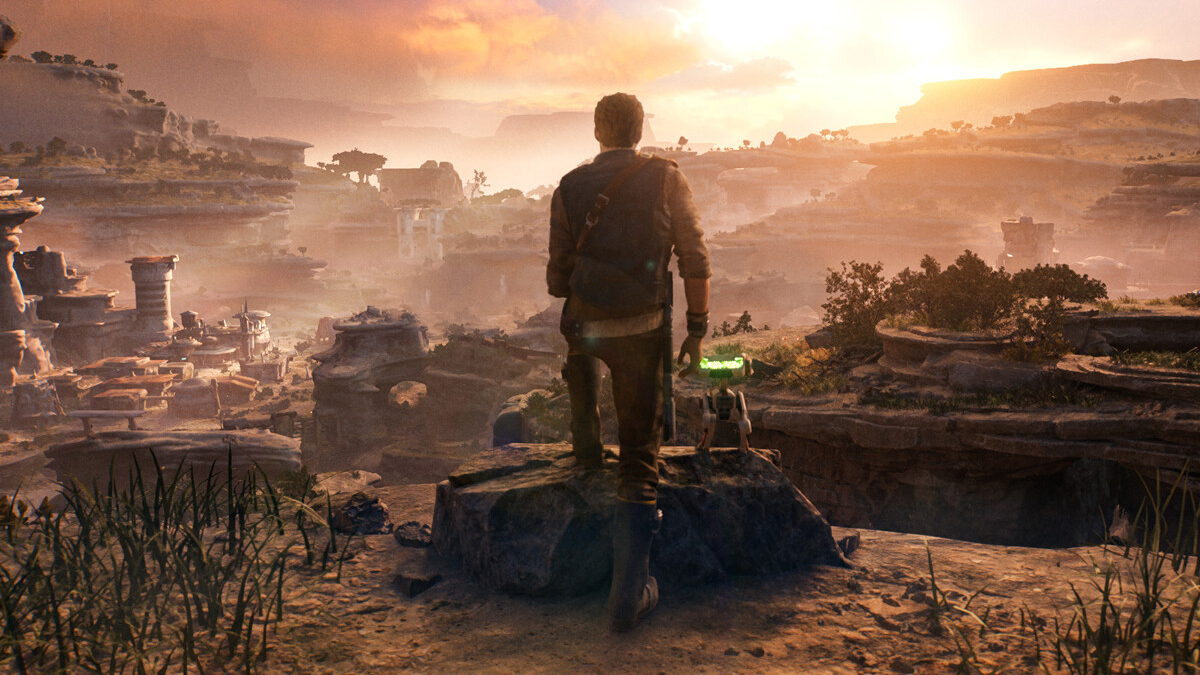Star Wars Jedi: Survivor has many issues at launch, especially on PC, but the biggest one is overall performance. It’s bad, and a quick look at just the Steam forums confirms that. Even high-end comps are having performance problems like crashing and not launching. Our guide will show you the best PC graphics and performance settings in Star Wars Jedi: Survivor you can set right now until official patches and updates come from EA.
PC Graphics Settings for Best Performance
The settings listed below are designed for Star Wars Jedi: Survivor players who want to achieve the smoothest performance possible but are ready to sacrifice some of the visual elements of the game. Unfortunately, that’s just one of the trade-offs.
Before attempting to apply these settings, navigate to the “Options” menu on the home screen, and click the cogwheel/gear icon in the top right corner of the screen. Then, select the “Visuals” tab and set the following options:
- Window Mode: Fullscreen
- Graphics Quality: Low
- View Distance: Low
- Shadow Quality: Low
- Anti-Aliasing: Low
- Texture Quality: Low
- Visual Effects: Low
- Post Processing: Low
- Foliage Detail: Low
- VSync: On
- Ray Tracing: Off
- AMD FidelityFX Super Resolution 2: Performance
- Motion Blur: Off
- Film Grain: Off
- Chromatic Aberration: Off
- Camera Shake: 0%
- Ambient Camera Sway: 0%
If you don’t like how the game looks with the settings listed above and are ready to sacrifice some of the FPS to make the game look better but still run smoothly, then here’s an alternative set of options you may want to try out:
- Window Mode: Fullscreen
- Graphics Quality: Standard
- View Distance: Medium
- Shadow Quality: Standard
- Anti-Aliasing: Standard
- Texture Quality: Epic
- Visual Effects: High
- Post Processing: Low
- Foliage Detail: Standard
- VSync: On
- Ray Tracing: Off
- AMD FidelityFX Super Resolution 2: Performance
- Motion Blur: Off
- Film Grain: Off
- Chromatic Aberration: Off
- Camera Shake: 0%
- Ambient Camera Sway: 0%
Best GPU Settings for Star Wars Jedi: Survivor
Our experience shows that in-game graphics settings can be effectively complemented by the GPU settings, so we also recommend optimizing your GPU settings on PC for an even better performance of Star Wars Jedi: Survivor.
nVidia GeForce Settings
Those with nVidia GPUs can also improve their performance by making these changes in the nVidia control panel:
- Set “Image Scaling” to “ON“.
- Set “Triple Buffering” to “ON“.
- Set “Ambient Occlusion” to “Performance“.
- Set “Anisotropic Filtering” to “Application Controlled“.
- Set “Antialiasing FXAA” to “Off“.
- Set “Antialiasing Mode” to “Application Controlled“.
- Set “Antialiasing Transparency” to “Off“.
- Set “Low Latency Mode” to “Ultra“.
- Set “Optimize for Computer Performance” to “On“.
Laptop users should also set “Power Management Mode” to “Maximum Performance“.
AMD Radeon Settings
AMD GPU owners can also apply the following settings:
- Toggle “Anti-Lag” to “On“.
- Toggle “Image Sharpening” to “On“.
- Toggle “Vertical Refresh” to “Off“.
- Set “AA Method” to “Multi Sampling“.
Those are the best PC graphics and performance settings in Star Wars Jedi: Survivor. Stay tuned for more Star Wars Jedi: Survivor tips and tricks articles right here.
Featured image via Electronic Arts.







Published: Apr 28, 2023 07:10 am